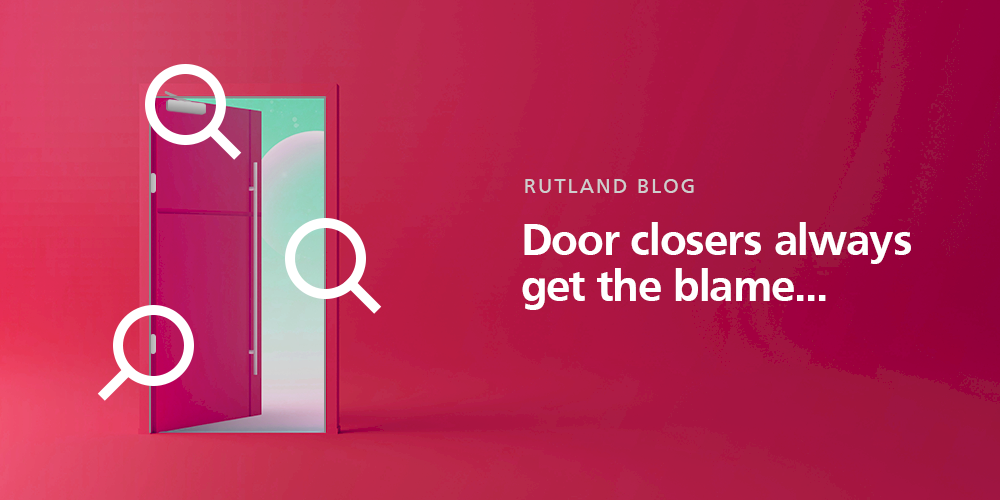
Why does the door closer always gets the blame?
We all know that the role of a door closer is to close a door reliably with controlled force. Door closers play a vital role in security, fire safety, noise reduction and damage control. For this reason, when a door does not close, or closes with too much force, it is often the door closer that automatically gets the blame. However, there are many reasons why a door may not be closing reliably or in a controlled manner.
Bad joinery/Installation
Probably the number one cause of doors failing to close is bad joinery or fitting. We often carry a spirit level on site to check if the door frame is plumb or not – if the door is meeting the frame at the top but not at the bottom then the door closer is not going to overcome this discrepancy. Doors can be particularly tricky to install in older buildings, as the walls and floor simply aren’t as straight, but even in new-builds, this cannot be assumed!
Gaps underneath a door can vary as well. Under building regulations, floors are allowed a tolerance of 10mm variation, which is a huge amount when you are trying to make something plumb – the door will need to be trimmed appropriately to allow for reliable closing, whilst keeping an eye on any requirements for cold smoke control (where the threshold gap should be either less than 3mm in height or fitted with a threshold seal). Skilled installers must always make the necessary measurements and adjustments and then check again. Even something as simple as a badly trimmed entrance door mat can interfere with the closing action.
Door gaps
Another major reason for doors not closing properly is insufficient gaps between the door and the frame. According to BS 8214, the gap between a fire door and the frame should be 2-4mm – we think 3mm is ideal, as too tight a gap can cause the door to ‘bind’ on the frame which will prevent the closer from successfully closing the door. If smoke seals are going to be added to the doors, these need to be taken into consideration at frame installation stage, because they require sufficient space to be fitted into – adding a smoke seal into a gap of 1mm can lead to a fire door sticking before it closes and latches shut. Poor fitting or retro-fitting using the wrong seal can also cause problems – always follow the manufacturer’s recommendations.
Ironmongery and other accessories
Sometimes the choice of ironmongery can interfere with the door closing. For instance, external doors are often fitted with locks with snibs which cause the door to automatically latch when pushed closed. If these are badly adjusted, they can actually prevent a door from closing or latching. Similarly, a badly fitted keep plate, can obstruct the door from closing.
Air pressures
We have written at length about air pressures in the past. Suffice to say, a door and its hardware can be correctly specified and well fitted but excessive positive or negative air pressure in a building can lead to doors not closing and latching properly, or cause them to swing open or shut in an uncontrolled manner (not what you want with a heavy door). Tall buildings in particular are renowned for their vortices which can create challenging conditions for self-closing doors.
Whilst architects try to limit the effect of air pressures by design, it is not always easy to predict. Fortunately, in nearly all cases, if the correct door closer has been used, it simply needs to be adjusted accordingly – small adjustments make a big difference so it is always best to start small and make adjustments in small increments until the desired effect is achieved. Watch our video on how to do this here.
Conclusion
In conclusion, it is helpful to remember that for a door closer to function successfully and reliably, the door itself must be functioning faultlessly, e.g. swinging, closing and latching without any resistance. A good rule of thumb when installing a door is the little-finger test. A door should close fully at the push of a little finger – if it does, a closer will close it reliably and in a controlled manner. In most instances of this not happening, it is not the door closer’s fault - there are several more likely areas worth investigating before blaming it on the closer. We recommend checking the frame, threshold and latch first.
Leave us your contact details and we will call you back for a free consultation about your requirements.